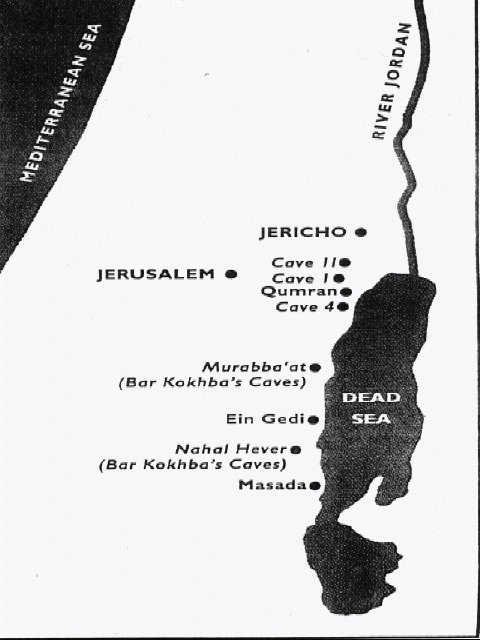In 1947, young Bedouin shepherds, searching for a stray goat in the Judean Desert, entered a long-untouched cave and found jars filled with ancient scrolls. That initial discovery by the Bedouins yielded seven scrolls and began a search that lasted nearly a decade and eventually produced thousands of scroll fragments from eleven caves. During those same years, archaeologists searching for a habitation close to the caves that might help identify the people who deposited the scrolls, excavated the Qumran ruin, a complex of structures located on a barren terrace between the cliffs where the caves are found and the Dead Sea. Within a fairly short time after their discovery, historical, paleographic, and linguistic evidence, as well as carbon-14 dating, established that the scrolls and the Qumran ruin dated from the third century B.C.E. to 68 C.E. They were indeed ancient! Coming from the late Second Temple Period, a time when Jesus of Nazareth lived, they are older than any other surviving biblical manuscripts by almost one thousand years.
Since their discovery nearly half a century ago, the scrolls and the identity of the nearby settlement have been the object of great scholarly and public interest, as well as heated debate and controversy. Why were the scrolls hidden in the caves? Who placed them there? Who lived in Qumran? Were its inhabitants responsible for the scrolls and their presence in the caves? Of what significance are the scrolls to Judaism and Christianity?
This exhibition presents twelve Dead Sea Scroll fragments and archaeological artifacts courtesy of the Israel Antiquities Authority as well as supplementary materials from the Library of Congress. It is designed to retell the story of the scrolls' discovery; explore their archaeological and historical context; introduce the scrolls themselves; explore the various theories concerning the nature of the Qumran community; and examine some of the challenges facing modern researchers as they struggle to reconstruct the scrolls from the tens of thousands of fragments that remain.
The Dead Sea
The Dead Sea is located in Israel and Jordan, about 15 miles east of Jerusalem.

A map of the Dead Sea Region.
It is extremely deep (averaging about 1,000 feet), salty (some parts containing the highest amount of salts possible), and the lowest body of water in the world. The Dead Sea is supplied by a number of smaller streams, springs, and the Jordan River.
Because of its low elevation and its position in a deep basin, the climate of the Dead Sea area is unusual. Its very high evaporation does produce a haze yet its atmospheric humidity is low. Adjacent areas to it are very arid and favorable for the preservation of materials like the Dead Sea Scrolls.
The Bible's description, in Genesis 19, of a destructive earthquake near the Dead Sea area during the time of Abraham is borne out by archaeological and historic investigation. While no evidence remains of the five cities of the plain (Zeboim, Admah, Bela or Zoar, Sodom, and Gomorrah) their sites are believed to be beneath the waters at the southern end of the sea.
Archaeological sites near the Dead Sea include Masada, Ein Gedi, and Qumran (where the Dead Sea Scrolls were found).
Library of Congress Materials Relating to the World of the Scrolls
- Continue exploring the Dead Sea Scrolls with The Qumran Library.